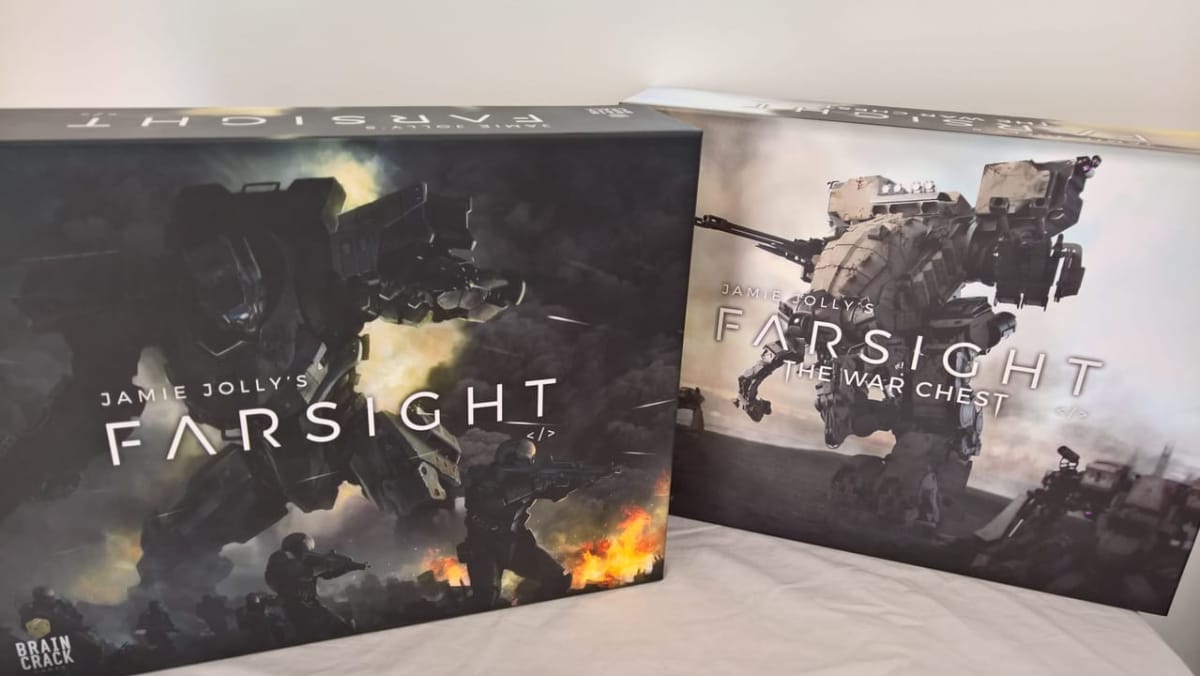In Farsight, players take the roles of private military forces fighting for control over a tiled map. Games are played with 2 teams of 1 or 2 players. This means that 3 or 4 player games are team games. Units are represented by cardstock card sized tokens with the stats printed on them. These are deployed facedown so the unit and its stats are hidden and are only revealed when in combat, or by one of the specialist units that are fighting a shadow war behind the scenes.
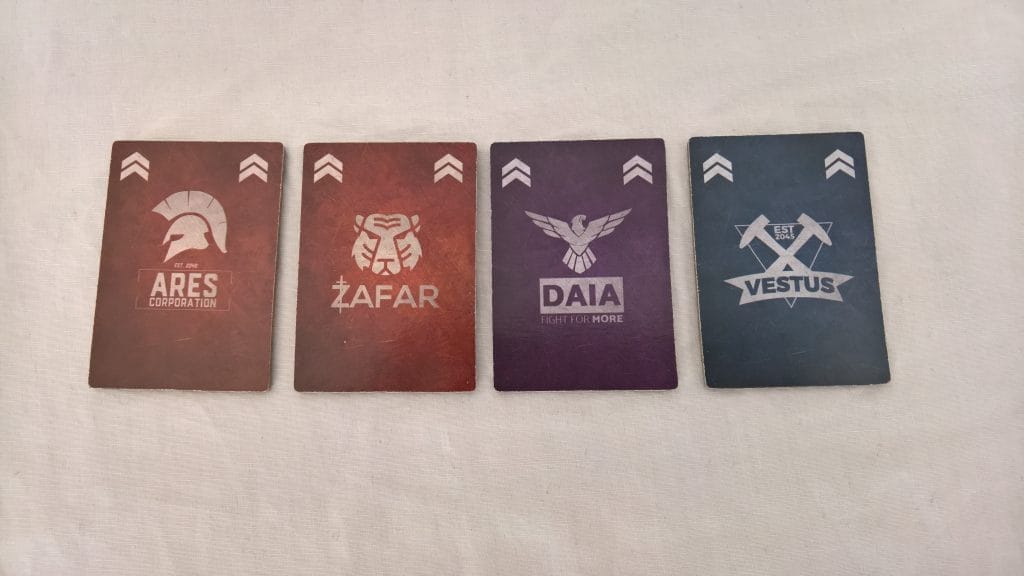
Farsight is a wargame in a box. Players can chose between 4 different forces, each with customizable force building options. When we first heard about Farsight, with its streamlined rules, fantastic artwork, hidden movement and shadow war mechanics we were sold and couldn’t wait to get our hands on a retail copy. Looking through the rulebook, it felt like an incredible game. On the tabletop however, it isn’t only the units and movement that are hidden.
The rules for Farsight are written with the intent of learning as you play, with scaling rules and mechanics building up as you play games. The first game is purely combat and movement based, with the rules for events and specialists not being used. The basic rules appear straight-forward. Players can deploy one unit a turn, which is deployed face-down so that the unit type is hidden from your opponent.
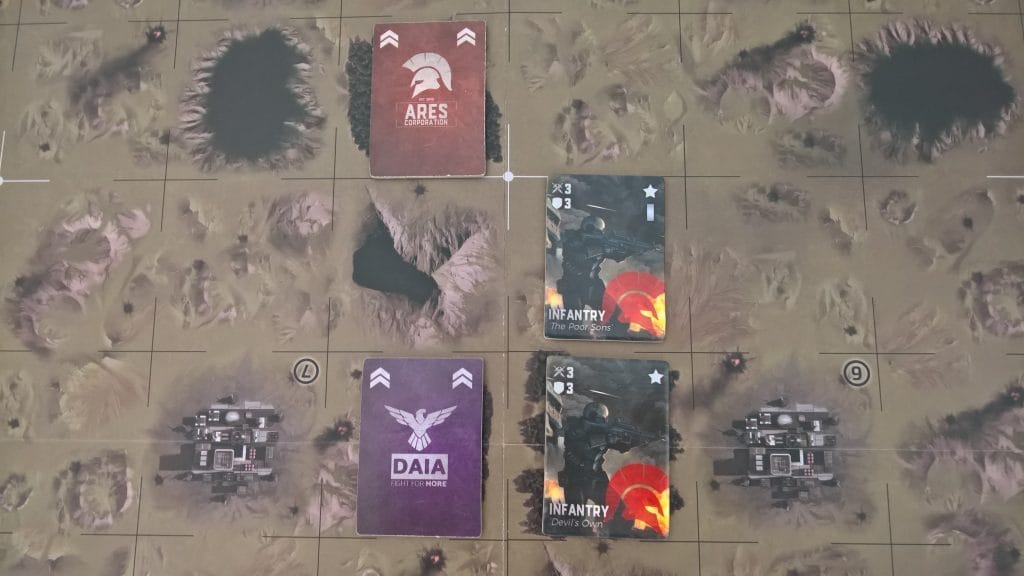
In the battlefield phase, units move and attack, with actions alternating between players. Starting with artillery, which always fires first in the phase, they can target an enemy 3 squares away. If an artillery unit fire, it can’t move, so early positioning is key for making use of it. Units then move, which is either 3 squares for a hidden or fast unit and 2 squares for everything else. If a unit engages another unit, by entering the square the enemy is in, it pins the enemy unit in place and stops them moving this phase.
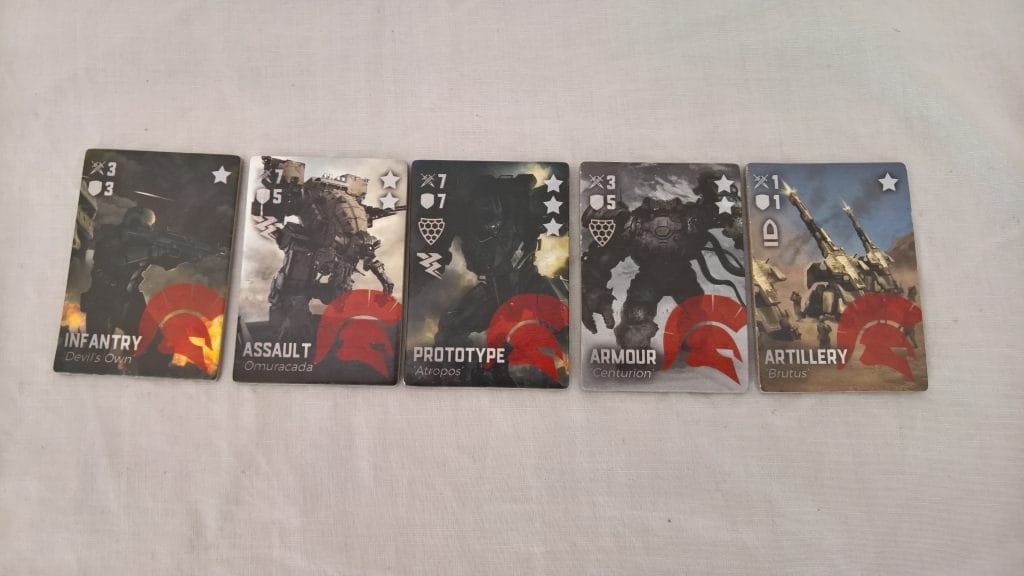
The next phase is the combat phase, and simple combats between 2 units are straight-forward and satisfying. The unit attacking rolls dice equal to its attack value, and the defender rolls dice equal to its defense value. Modifiers can take away or add dice, such as attacking from high ground, attacking a unit in its flank or attacking from hidden. Each army has a quick reference card that lists these modifiers, some you only get as the attacker and others as the defender. Some modifiers double up, so attacking an enemy in the rear gives you more dice and them less dice.
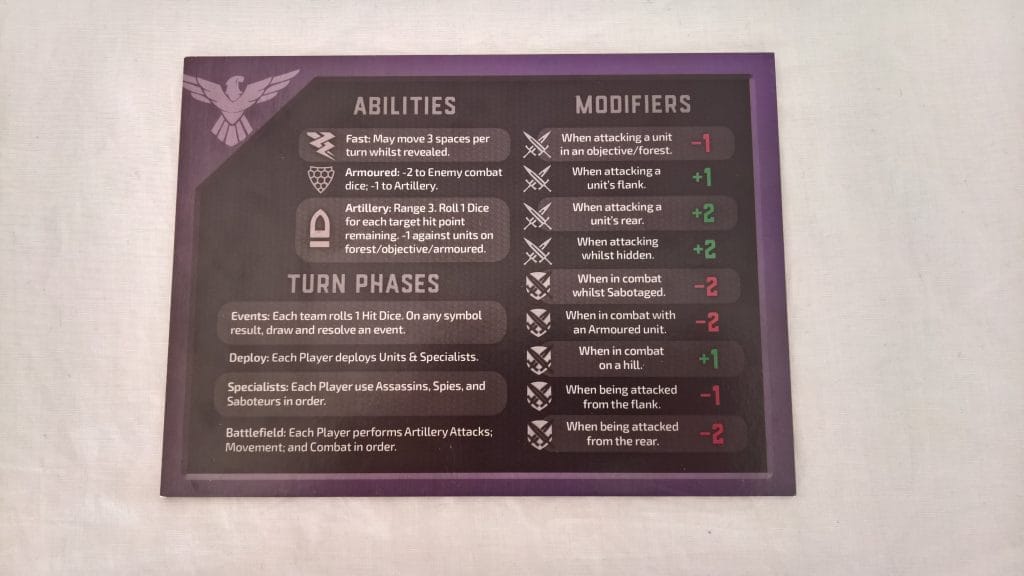
The attack and defense values are both used offensively and the dice for units are rolled and damaged issued simultaneously. What this means is that some units are better at attacking, making them more effective if moved into combat, where as some units have a higher defense value, so using them to lure your opponent into attacking them works better.
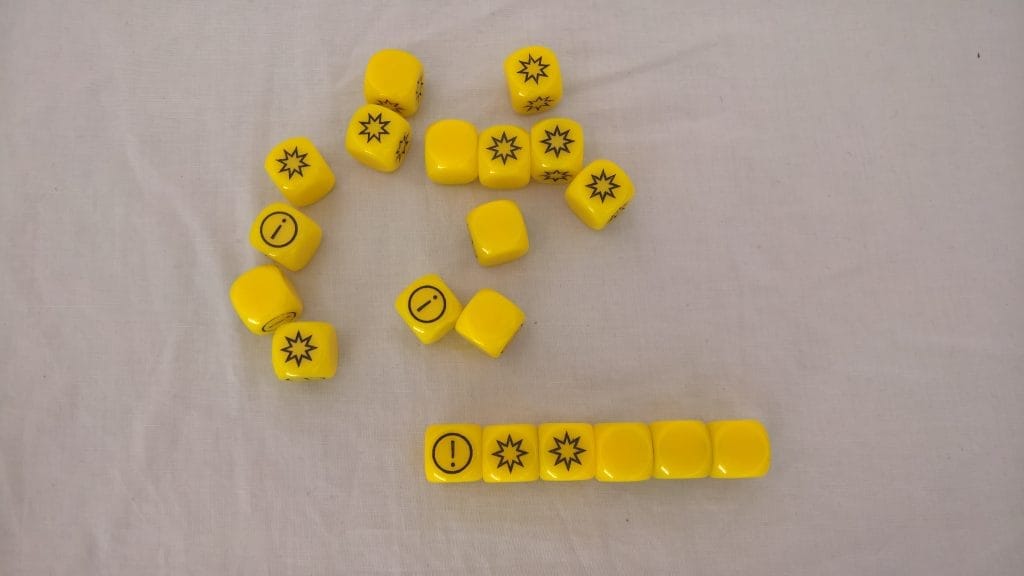
All of the dice are the same, and contain 3 blank sides, 1 exclamation mark (which is mainly used for events) and 2 blasts. The amount of damage done is dictated by the blasts rolled. Every unit in the game can take the same amount of damage before being destroyed and that is indicated by damage markers. One of which is placed on the unit on its first side for one hit, flipped to the other side for the second and then the unit is removed on its third damage received.
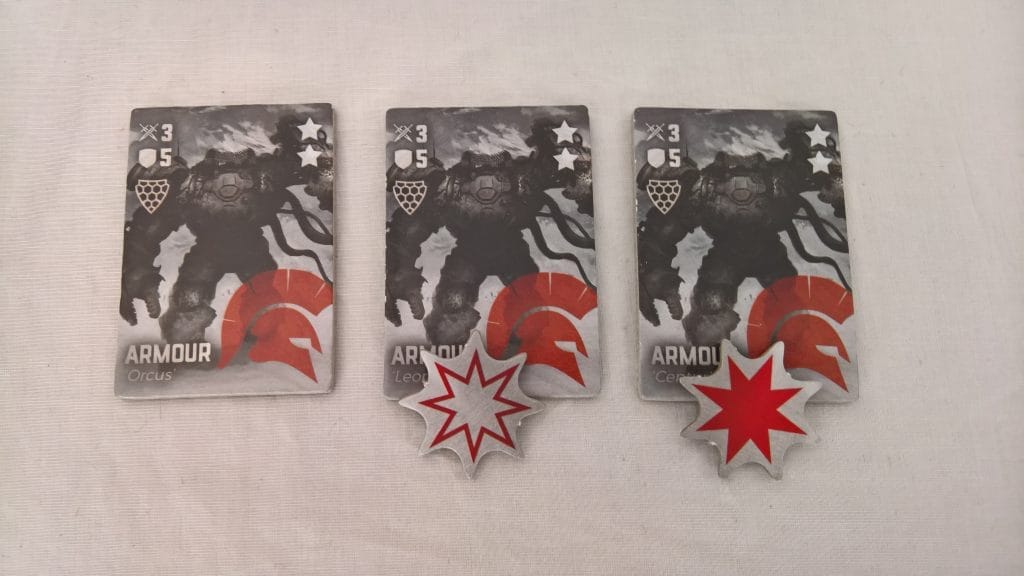
Where things get can get complicated in Farsight is during combats with multiple units. If a third or more unit piles into a combat, players work out which the defending unit is. This unit rolls dice equal to its defence value dice and the rest, fanning out from the defending unit, roll their attack value in dice. All the combat happens at the same time and is only just rolled in order, so units can wipe each other out. It’s straight-forward to work out after a couple of turns, but it felt like it staggers the flow of the game. The simultaneous combat feels good for balance, but having to stop to work out who the defender was and then work backwards hampers the immersion for what feels like a very punchy combat system.
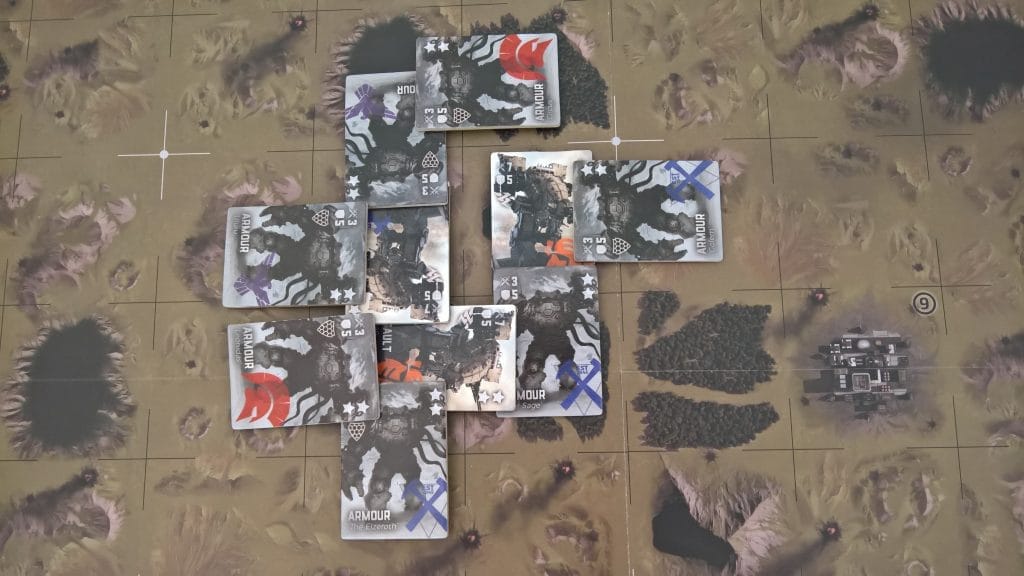
Post combat clean up with multiple units can also sometimes be complicated for working out which units advance and which retreat. The player who causes the most hits is the winner of the combat and their attacking unit advance. The losing players attacking unit’s move back into the square they were attacking from. This can cause some units to be looking to move into the same square and it isn’t clear what happens in this case.
To work out the winner and loser of a multiple engagement, players need to keep track of total wounds caused across the combat, which is easy to work out or remember in small combats, but in huge engagements, can lead to stopping the flow of the game as players try to work out what damage they caused.
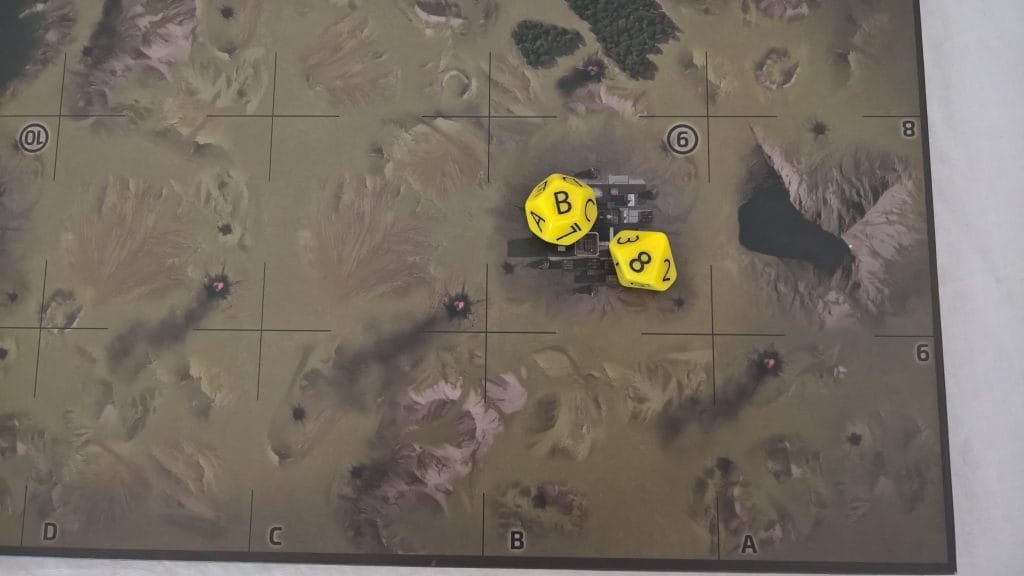
Players win the game by either controlling 8 objectives, of which there are 12 equally spaced across the game board, removing all the enemy forces or by controlling 3 of the 4 objectives closest to the enemy side of the board.
After getting the hang of the initial rules, players can then add in specialists and events to their games. Events are fun and have a lot of flavor, such as opening up tunnels that link parts of the map and plagues or lightning storms that damage units and hamper operations.
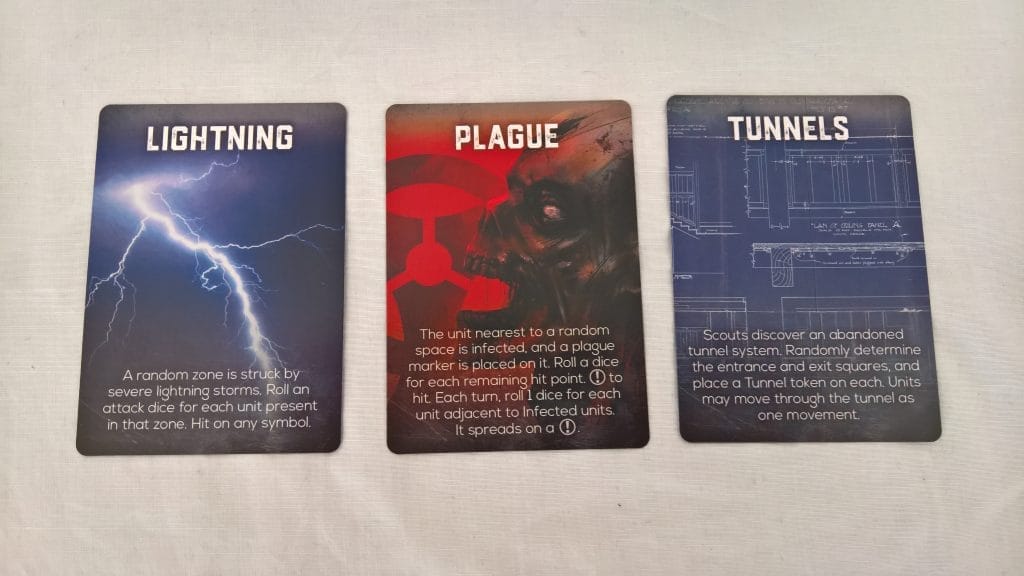
Specialists open up a new element to the game, in a secret shadow war Battleship style. Players deploy specialist unit by placing their card facedown in front of them, then marking the unit’s position with the dry wipe markers on the reverse of their quick reference board. Players should be careful though, as we discovered, if playing on a table with a soft covering, moving your quick reference card can wipe the information on the facedown side of your board.
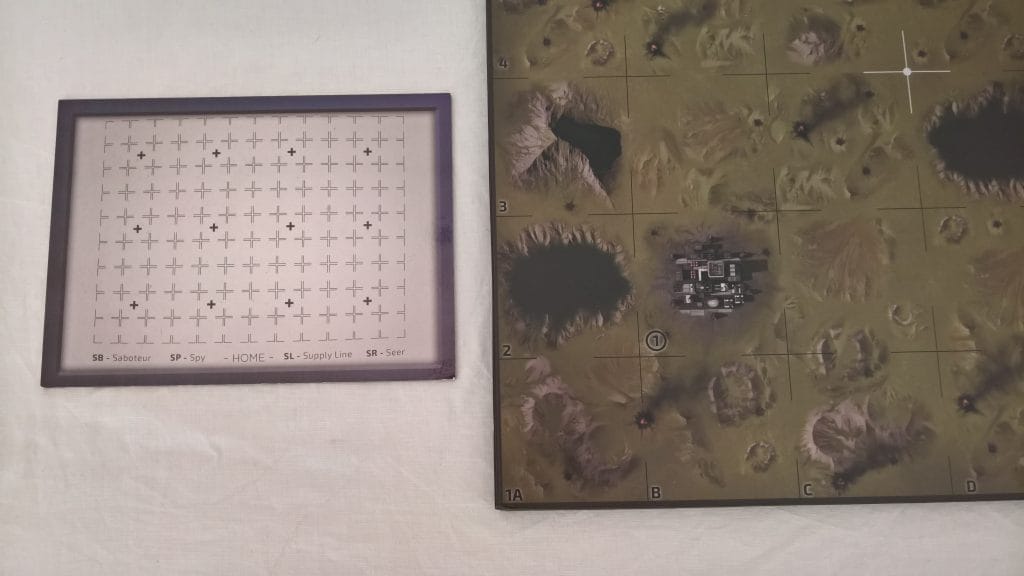
The specialist element does add a great tactical mechanic to the game. Spies can find hidden units, Saboteurs can hamper a units effectiveness and Assassins can hunt other specialists. Notes are made on the board on the reverse of your player reference card as you call out locations for your Assassin to hunt.
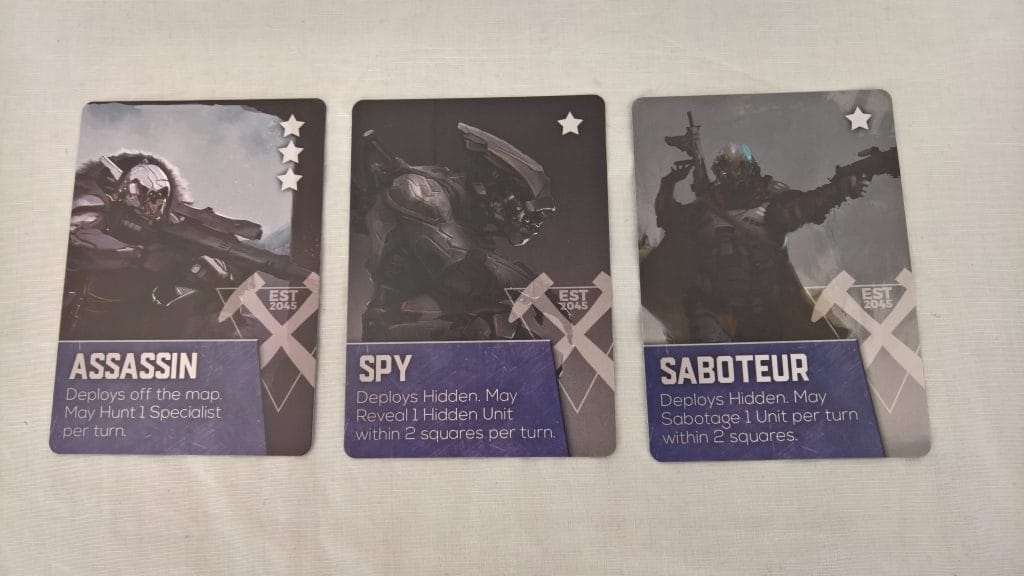
The game is played with cardstock to represent the forces on the board, but there is also a War Chest upgrade available that includes miniatures for use in the game. This means that players who want the miniatures, can get them and use them, but they’re not integral to the game, as the focus is on hidden units to start with. This keeps the cost down of the core game and also keeps the box light and portable. The core box is a fair size, but you can transport the components separately, easily in a much smaller box.
[gallery columns="2" size="large" ids="288015,288016"]
After players have played a few games with set armies, they are able to customize their own forces. There’s enough content to allow players to have some diverse forces, but players looking for the level of different forces available in popular wargames won’t find that level here. The 4 factions don’t feel too different too each other and it would be nice to see this expanded upon in possible future expansion packs. Seeing some real variety in the 4 different forces in the core box, even a special ability for each faction to make it feel unique would have added more depth to their feel.
We would have love to have seen a variety in how the different factions play, or create their armies. All of the forces have access to the same amount of troop types at the same cost. It would have been interesting to possibly have one faction getting infantry cheaper, along with having access to more of them, and another being able to get armored units cheaper. Currently the only difference between forces is the name and the faction symbol.
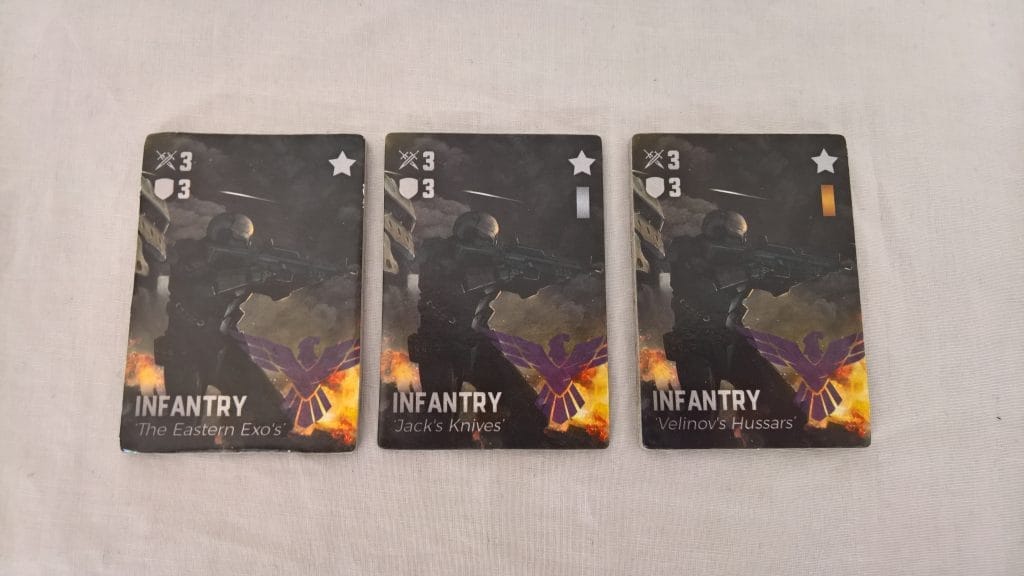
The art throughout is great and the component’s production value is strong. The game itself feels like it’s on the edge of being an incredible game, but the combat and subsequent clean up phase needs some polish. It’s interesting and has some fun elements, but in our first game we found some issues with the rulebook, as several rules integral to core mechanics aren’t immediately clear.
The tactical elements are there, with hidden units and slowly building forces deploying each turn. The specialists also add a deep tactical element to the game, but it just feels hampered by a slightly clunky multiple combat system.
Players can mix up the game slightly by playing a diceless version, which gives units a hit for every three dice they would roll. This takes away the random element of the game and makes it all about stats. Players can also create their own maps using the reverse side of the play board, which is blank, and the included map feature tiles. We would recommend finding some way to stick the tiles down though, because moving miniatures or card stock units around on tiles on a playboard does mean everything shifts around a lot during play.
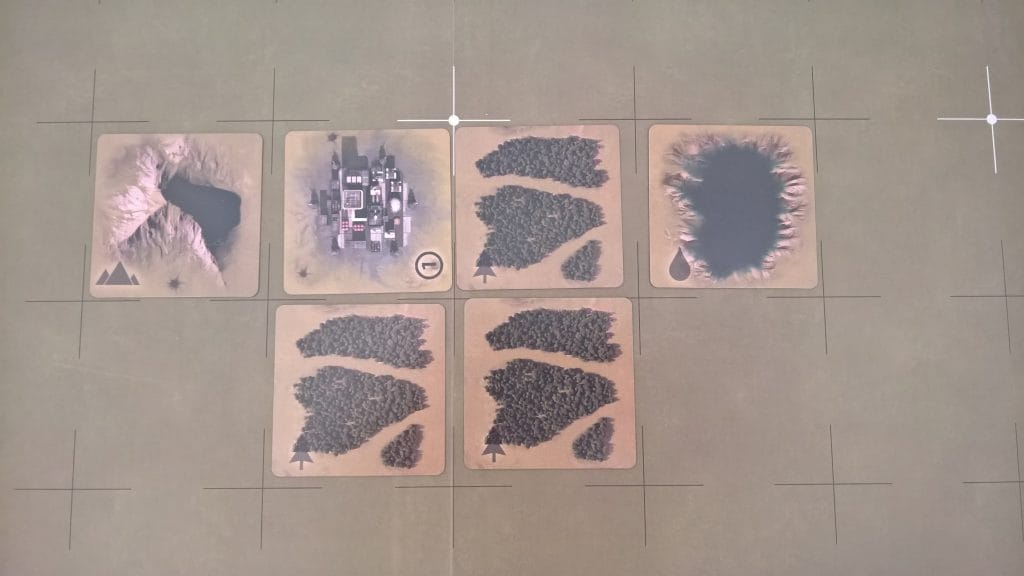
The Bottom Line:
Farsight has some incredible elements, which are well blended together, it just feels hampered by an unpolished combat system. The rulebook could be made clearer for players learning as they play. There could also be some variety between the different factions and their force construction. Those points aside though, Farsight feels like it's on the cusp of being a fantastic game. The hidden movement, artillery, events and shadow war with the specialists all work extremely well together. The basic combat system is very streamlined and feels satisfying, but large combats with multiple combatants doesn't flow well. The available upgrade War Chest with the miniatures feels like an excellent market decision. Allowing players the option but keeping the cost down.
We really hope that Farsight is given the opportunity to expand as we feel that this could be an incredible game if allowed to grow and develop.
You want a hidden movement game with some interesting tactical elements.
You enjoy games with a blending of different mechanics.
You want to fight battles between mechs, whilst simultaneously fighting a hidden war between specialists.
Avoid this game if:
You want variety between the factions.
You want a stream-lined combat system.
This copy of Farsight and the War Chest was provided by Asmodee UK.
What do you think of miniatureless games that can be upgraded to include miniatures? Do you prefer to play with miniatures? What do you think of the Farsight's combat system? Do you like hidden movement games? Let us know in the comments below.
Review Summary
Have a tip, or want to point out something we missed? Leave a Comment or e-mail us at tips@techraptor.net
